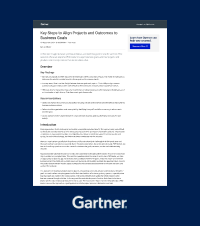What is Agile Leadership and why to embrace it?

Today’s business environment is a whirlwind of change. Customers have new expectations daily, and innovation happens at breakneck speed. Traditional, top-down leadership styles are struggling to keep up.
Enter Agile Leadership: a fresh approach inspired by agile software development. It empowers teams, fosters collaboration, and prioritizes flexibility. Unlike rigid hierarchies, Agile Leadership allows organizations to adapt and thrive in this dynamic landscape.
This article will be your guide to Agile Leadership. We’ll explore its core principles, how it empowers teams, and the many benefits it brings to organizations. We’ll also compare it to traditional leadership and highlight the key qualities of successful Agile leaders.
What is Agile leadership
In an ever-changing business landscape where uncertainty and complexity are the norm, a new leadership style has emerged:Agile Leadership. Inspired by agile software development methodologies, this approach emphasizes flexibility, adaptability, and collaboration to navigate dynamic environments successfully.
Unlike traditional leadership, which focuses on control and hierarchy, Agile Leadership empowers teams and individuals to make decisions, take ownership, and work together towards common goals. It is a leadership style that fosters innovation, creativity, and responsiveness to change.
This kind of leadership is not a magic formula or a set of strict rules, but rather a philosophy that adapts to the specific needs of each organization and context. However, the core principles of Agile Leadership, such as flexibility, collaboration, and a focus on value, can be applied by any leader who wants to navigate successfully in today’s business world.

AGILE PORTFOLIO MANAGEMENT
Transform your Agile leadership strategy
Discover how to achieve Enterprise agility with Triskell sOFTWARE.
The role of Agile methodologies and the need to adapt to change
Agile methodologies, such as Scrum and Kanban, have revolutionized software development by emphasizing flexibility, collaboration, and rapid iteration. These same principles are at the heart of Agile Leadership, enabling organizations to respond swiftly to changing market conditions and customer demands.
In a world where change is constant, the ability to adapt is crucial for survival. Agile Leadership embraces this reality, fostering a culture that encourages continuous learning, experimentation, and improvement. By breaking down silos and empowering teams to make decisions closer to the work, Agile organizations can pivot quickly and seize new opportunities.
Here’s how Agile methodologies and the need to adapt to change intertwine with Agile Leadership:
- They provide a framework for breaking down complex projects into manageable tasks, enabling teams to deliver value incrementally and adapt to feedback.
- The emphasis on collaboration in Agile methodologies aligns perfectly with Agile Leadership’s focus on teamwork and shared ownership.
- The iterative nature of Agile methodologies mirrors Agile Leadership’s commitment to continuous learning and improvement.
Take control of your Agile transformation
Request a personal demo and see how Triskell’s Agile Portfolio Management solution can empower your teams for Agile success.
Components of Agile leadership
Agile Leadership isn’t a rigid system, but a flexible set of principles tailored to each organization. Successful Agile leaders should embody these key qualities:
- Visionary: a clear vision for the organization’s future, articulated in a way that inspires and motivates others.
- Empathetic: understand the needs and motivations of employees, creating a supportive and inclusive work environment.
- Communicative: effective communication skills to clearly articulate ideas and listen attentively to others.
- Decisive: the ability to make quick and sound decisions, even in uncertain situations.
- Adaptable: comfort with change and the ability to adjust strategies and approaches as needed.
However, Agile Leadership goes beyond the soft skills of individuals. It is a way of approaching leadership that brings together these key principles:
1. Beyond the Agile team
Agile leaders are more than project managers. They’re visionary leaders who inspire teams towards shared goals. They act as coaches and facilitators, guiding and supporting teams in self-organizing and working effectively. Importantly, they remain humble and open to learning from their own mistakes and those of others.
2. Continuous learning
Agile leaders recognize that change is the only constant. They champion continuous learning and improvement. They encourage teams to experiment, take calculated risks, and learn from both successes and failures. Fostering a culture of open communication and feedback where everyone feels safe sharing ideas is key.
3. Motivated teams drive results
Agile leaders understand that people are the engine of success. They create a motivating and empowering work environment. Recognition and rewards for individual and team achievements foster a sense of ownership and pride. By creating opportunities for personal and professional development, they help employees reach their full potential.
4. Eliminate obstacles and bottlenecks
Agile leaders are constantly on the lookout for roadblocks hindering progress. They actively break down silos and promote cross-functional collaboration. To streamline processes, they eliminate unnecessary bureaucracy.
5. Decentralized decision-making
Empowering teams to make decisions closer to the work is essential in Agile Leadership. Agile leaders trust their employees to use their expertise and judgment to solve problems and make sound decisions. This decentralization not only speeds up decision-making, but also fosters a sense of ownership and accountability among team members.
WHITE PAPER
Implementing Agile for Enterprise Adoption
Command&Control vs Agile leadership
Command & Control Leadership is characterized by a hierarchical structure with clear lines of authority. Leaders make decisions at the top and communicate them down to the workforce, who are expected to follow instructions without question.
Key characteristics of command&control leadership:
- Centralized – decision-making: leaders hold the power to make decisions, with little input from lower levels.
- Rigid structure: clear hierarchy with well-defined roles and responsibilities.
- Top-down communication: information flows from the top down, with limited feedback channels.
- Emphasis on control: leaders closely monitor and control employee activities.
However, while this kind of leadership may have been effective in the past, it often struggles in today´s dynamic business environment:
- Lack of agility: the rigid structure makes it difficult to adapt to change quickly.
- Disengaged employees: employees may feel disengaged and unmotivated due to the lack of autonomy.
- Stified innovation: the top-down approach can stifle creativity and innovation.
Agile Leadership, in contrast, is a more flexible and adaptable approach that empowers teams to make decisions and take ownership of their work. Let´s focus now on the key benefits of Agile leadership and how it can help organizations to thrive in today´s dynamic business environment.
Benefits of Agile leadership
Agile Leadership has emerged as a powerful approach that empowers teams, fosters collaboration, and drives innovation, leading to a multitude of benefits for organizations of all sizes.
1. Teams focused on delivering value
Agile leadership encourages teams to focus on what really matters and brings value to the organization, being efficiency and excellence the guiding principles that light the way for Agile teams. By focusing only on initiatives and processes that really add value to the organization, Agile leaders make their teams more efficient.
2. Teamwork as the foundation of success
Agile methodologies emphasize the importance of teamwork, recognizing that collective intelligence and diverse perspectives are crucial for success. Agile leaders foster a culture of teamwork where team members feel valued, respected, and encouraged to contribute their unique skills and expertise.
3. Resilience and strength in the face of adversity
The ever-changing nature of today’s business environment demands organizations that are resilient and adaptable. Agile Leadership instills a culture of continuous improvement and empowers teams to embrace change. This adaptability enables organizations to navigate challenges, overcome obstacles, and emerge stronger.
4. Process and workflow optimization
Agile focuses on delivering value in the shortest possible time. Agile leaders have to eliminate all those elements that can be an obstacle for their teams to work efficiently. Therefore, companies that adopt this approach focus on optimizing their processes and workflows so that teams can deliver value in a timely manner.
5. Increased commitment to the organization
Agile Leadership fosters a sense of ownership and empowerment among employees, giving them the autonomy to make decisions and take ownership of their work. This empowerment leads to increased employee engagement, motivation, and commitment to the organization’s success.
WHITE PAPER
Agile Portfolio Management – Making the right decision
Conclusion: Agile Leadership, the path to your organization’s success
Thanks to this new Agile leadership approach, companies can focus on what really brings value to the organization. They are more flexible to change, thanks in large part to the possibility for individuals and teams to develop their competencies, and to extend the decision-making core to more elements within the teams and the company.
If you are already implementing an Agile approach in your department but there are certain managers who are reluctant to see the advantages of the change, don’t worry, follow the Agile practices themselves so that they join this new approach. Train them, make them participate in a greater number of decisions and, ultimately, lead by example so that Agile practices end up prevailing throughout the organization.
SUBSCRIBE TO OUR NEWSLETTER
Get stories like this in your inbox
Request a demo of Triskell Software
Are you interested? Would you like to have more information? These are just some of the features that Triskell has to offer. Request a demo of Triskell.

FAQs about Agile leadership
Is Agile leadership a replacement for traditional leadership styles?
Agile leadership is not necessarily a replacement for traditional styles, but rather a different approach suited for today’s dynamic environments. Agile leaders still need to provide direction and vision, but they do so in a way that empowers teams and embraces change.
Is Agile Leadership only for software development teams?
While Agile methodologies originated in software development, Agile Leadership principles can be applied to any team or organization. The core aspects of adaptability, collaboration, and empowering employees are valuable across industries.
How can you become a more Agile Leader?
There are several ways to develop your Agile leadership skills. Here are a few tips:
- Educate yourself on Agile methodologies.
- Foster a culture of open communication and feedback.
- Empower your teams and trust their judgment.
- Be adaptable and embrace change.
- Focus on continuous learning and improvement.
What benefits can Agile leadership bring to an organization?
Agile leadership can lead to several benefits, including:
- Teams focused on delivering value.
- Increased collaboration and teamwork.
- Improved resilience and adaptability.
- More efficient processes and workflows.
- Increased employee engagement.
Related Content

Resource Management in Agile, Hybrid and Waterfall projects: key elements and best practices
Learn how to effectively manage resources in hybrid project management environments where Agile and Waterfall methodologies intersect.

Best PMO software and tools for 2025: the ultimate guide
Explore and compare the best PMO software for project management, resource allocation, and strategic alignment, all in one guide.

Why SAFe needs true Portfolio Management
Uncover the game-changer for SAFe success! Revolutionize your strategy with True Portfolio Management. Boost efficiency, drive results.

